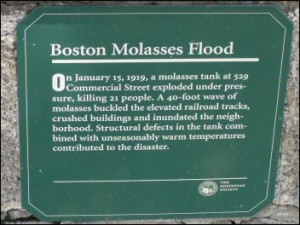Death
Kook Dentist Martin Van Butchell
Martin Van Butchell was one of the most popular dentists in eighteenth-centuryBesides pulling teeth, he also specialized in the treatment of ruptures and anal fistulas. But here's the best part: "When his first wife, Mary died, Martin arranged for her body to be embalmed and publicly displayed in his dental office for advertising purposes."
There's more about Van Butchell in Wikipedia.
Posted By: Alex - Thu Apr 23, 2009 -
Comments (11)
Category: Death, Medicine
Alice Redux

Posted By: Paul - Tue Apr 14, 2009 -
Comments (8)
Category: Animals, Death, Literature, Books, Fantasy, Parody, Weapons
Paradoxical Undressing
Paradoxical undressing is a term for a phenomenon frequently seen in cases of lethal hypothermia. Shortly before death, the person will remove all their clothes, as if they were burning up, when in fact they are freezing. Because of this, people who have frozen to death are often found naked and are misidentified as victims of a violent crime.Why does this happen? According to M.A. Rothschild and V. Schneider, writing in the International Journal of Legal Medicine:
But wait! It gets even weirder. Once they've undressed, the dying person will frequently try to crawl into a small, enclosed space. For which reason, victims of hypothermia are often found naked, squeezed into cupboards or beneath beds. This is called Terminal Burrowing Behavior. Again from Rothschild and Schneider:

The body of a 91-year-old man was found beneath a bed in the corner of a shed.
The man had burrowed there.
Posted By: Alex - Tue Apr 14, 2009 -
Comments (6)
Category: Death, Health, Psychology
The Man Who Swallowed Clasp-Knives
An account of the life and death of John Cummings, a man who strove to earn a Darwin Award long before the concept of Darwin Awards existed. Reported in the Chicago Tribune, March 14, 1880:He paid dearly for his frolic; for he was seized with constant vomiting, and pain in the stomach. Taken to a hospital, he was by efficacious medical treatment relieved, as he imagined, of all the knives he had swallowed. But in this he would appear to have been mistaken. Portions of knives undissolved remained in his stomach. The amount of relief, whatever it was, did not cure the poor wretch of his folly. When at Spithead in December, 1805, and somewhat tipsy, he resumed his boastfulness of being able to swallow knives, and to amuse the ship's company swallowed nine clasp-knives, some of them of a large size. Again he became ill, and was in the hands of the ship's surgeon for several months, during which portions of knives were discharged. At length he was admitted as a patient at Guy's Hospital in 1807, and again he came to the hospital in 1808. There he remained, sinking under his sufferings, until March, 1809, when he died in a state of extreme emaciation.
Posted By: Alex - Sun Apr 12, 2009 -
Comments (5)
Category: Death, Medicine, Performance Art
An Aqueous Solution
Posted By: Paul - Tue Apr 07, 2009 -
Comments (5)
Category: Death, Surrealism, Cartoons, North America, Weather
The Big Snit
Personally, I would happily watch a TV show titled "Sawing for Teens."
Posted By: Paul - Thu Apr 02, 2009 -
Comments (4)
Category: Death, Destruction, Disasters, Domestic, Marriage, Games, War, 1980s, North America
Death by Molasses
We're a couple of months late with this one: sorry! The 90th anniversary of the Great Boston Molasses Flood, which killed 21 people.
Posted By: Paul - Wed Apr 01, 2009 -
Comments (8)
Category: Death, Destruction, Food, 1910s, North America
Walking Zombie Syndrome
Do you feel dull and listless? Have you lost interest in everything? Do people describe you as "dead wood"? You may be suffering from Walking Zombie Syndrome. First described in the Journal of the Tennessee Medical Association, Dec 1979:Walking Zombies are present on the streets of every city, and not a single practitioner will escape their complaints. Even though they may faithfully attempt work every day, they are for the most part nonproductive and often represent more of a liability than an asset to their employers, families and friends. Many are accident prone, and most Walking Zombies cost their company a great deal by chronic absenteeism.
Posted By: Alex - Thu Mar 26, 2009 -
Comments (13)
Category: Death, Psychology
Detergent Suicide
I posted last week about how Aokigahara Forest in Japan was a popular destination for those wishing to commit suicide. Another suicide fad in Japan is "Detergent Suicide," which involves gassing yourself by mixing common household chemicals:A few cases of Detergent Suicide in the US have experts concerned that the fad may be catching on over here.
An interesting article by sociologist Kayoko Ueno argues that suicide is actually one of the defining features of Japanese society (think of hara-kiri and kamikaze) and one of its major cultural exports:
Posted By: Alex - Tue Mar 24, 2009 -
Comments (16)
Category: Death, Suicide, Asia

| Who We Are |
|---|
| Alex Boese Alex is the creator and curator of the Museum of Hoaxes. He's also the author of various weird, non-fiction, science-themed books such as Elephants on Acid and Psychedelic Apes. Paul Di Filippo Paul has been paid to put weird ideas into fictional form for over thirty years, in his career as a noted science fiction writer. He has recently begun blogging on many curious topics with three fellow writers at The Inferior 4+1. Contact Us |






